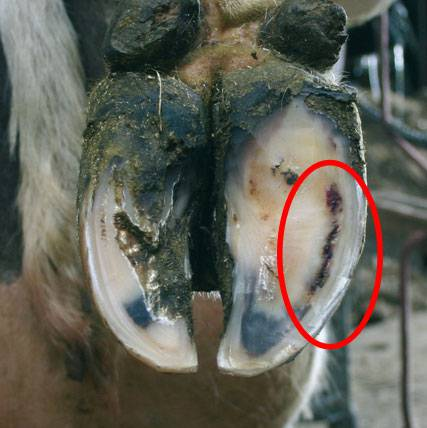Your cart is currently empty!
Optimising Digital Cushion Thickness to Reduce Lameness in Cows

The late lactation and dry cow periods are critical for optimising Digital Cushion Thickness (DCT) and minimising the incidence of sole ulcers and white line disease. Proper nutrition and management during these phases can significantly impact the health and well-being of your herd, ultimately reducing lameness issues in the subsequent lactation.
Importance of Body Condition Score (BCS)
Feeding cows to achieve an optimal Body Condition Score (BCS) at drying off and calving should be a key management focus. Ideally, cows should be dried off with a BCS between 3.0 and 3.25, targeting a BCS of 3.5 at calving and a minimum of 2.75 after calving. A cow’s BCS directly affects its digital cushion thickness, which is also linked to metabolic issues around calving.

The Link Between Digital Cushion Thickness and Lameness
Multiple factors contribute to lameness in herds, but research indicates that DCT is a strong indicator of lameness issues (Bicalho et al., 2009). The digital cushion acts as a shock absorber in the hoof. A higher BCS leads to a thicker digital cushion, which is essential for absorbing impact. If the digital cushion is insufficient, the weight-bearing load on the claw wall transfers to the central part of the sole, generating abnormal pressure that increases the risk of sole ulcers and white-line disease.
Managing Thin Cows to Reduce Lameness
As thin cows are more predisposed to increased challenges related to sole ulcers and white line disease, the management of cow roadways, cubicle numbers, and sizes relative to the size of the cow, along with hygiene around the yard and cow roadways, becomes critical. On the flip side, excessive BCS around calving can predispose cows to various metabolic challenges, such as ketosis, milk fever, metritis, and displaced abomasum, which in turn lead to reduced dry matter intake in the early lactation period and subsequent loss of BCS and DCT. This is why we target a maximum BCS of 3.5 at calving.

The “Critical Window”
Research shows that thin cows (BCS < 3.0) at calving have a 9.4-fold risk of lameness in the subsequent lactation (Hoedemaker et al., 2008). Additionally, cows with a BCS of less than 2.5 during lactation have a 1.6 times higher incidence of lameness compared to the rest of the herd. As cows tend to lose BCS in early lactation, DCT reaches its lowest point between 90 and 150 days in milk (Solano et al., 2015).
Best Farm Practices for Preventing Lameness
While a low BCS increases the risk of sole ulcers and white-line disease, several on-farm practices can also contribute to these problems:
- Cubicle Design and Bedding: Ensure that at least 80% of cows are lying down at any given time, with a cow-to-cubicle ratio of 1:1. Consider whether freshly calved cows are being let out after calving.
- Shed Design: Passage widths should be a minimum of 3.5 metres. Scrapers must be maintained to minimise slurry buildup, both in the shed and behind the scraper.
- Turning Corners: Assess how often cows are turning at 90-degree angles. The more cows turn at sharp angles on thin DCT, the higher the risk of mechanical sole damage.
- Walking Distance and Roadway Maintenance: Ensure optimal DCT to evenly distribute weight-bearing loads as cows walk to and from the milking parlour.
Conclusion
To minimise the incidence of sole ulcers and white line disease in your herd, it’s essential to manage cow BCS from calving through to peak milk production, reduce exposure to mechanical sole damage, and optimise cow comfort. DP Hoof Care offers a comprehensive range of hoof care products, from hoof-trimming crushes to Blue Max Glue. We provide everything you need to keep your cows’ hooves healthy. Our expert advice and support ensure your animals remain happy and healthy.
Contact us today to learn more about our products and services!